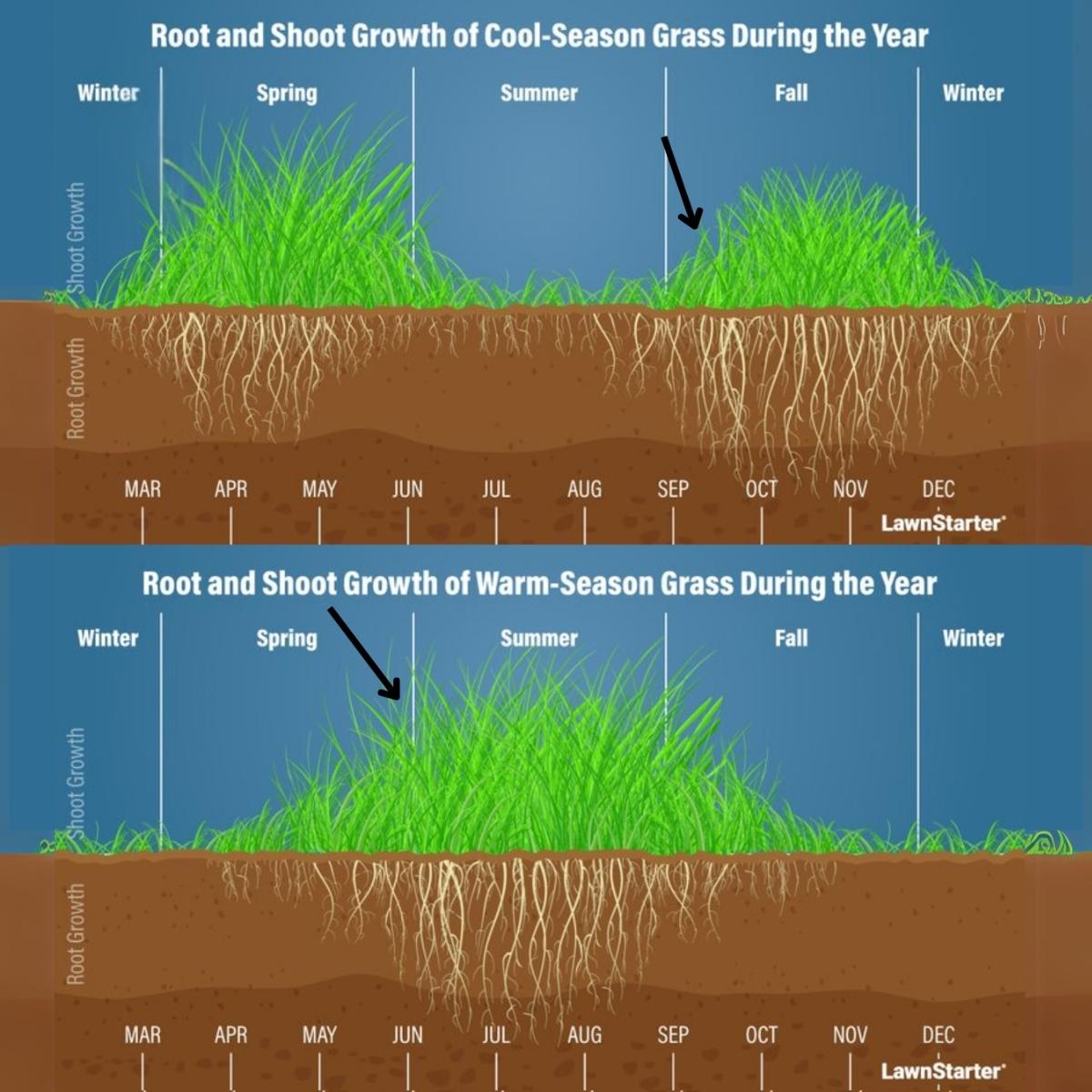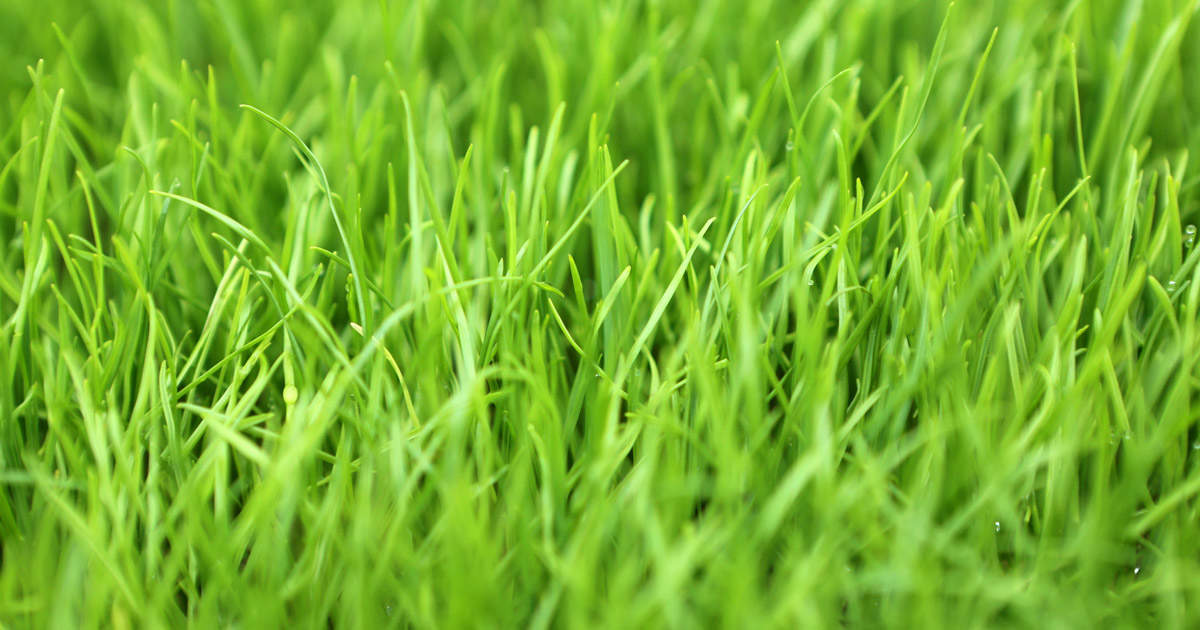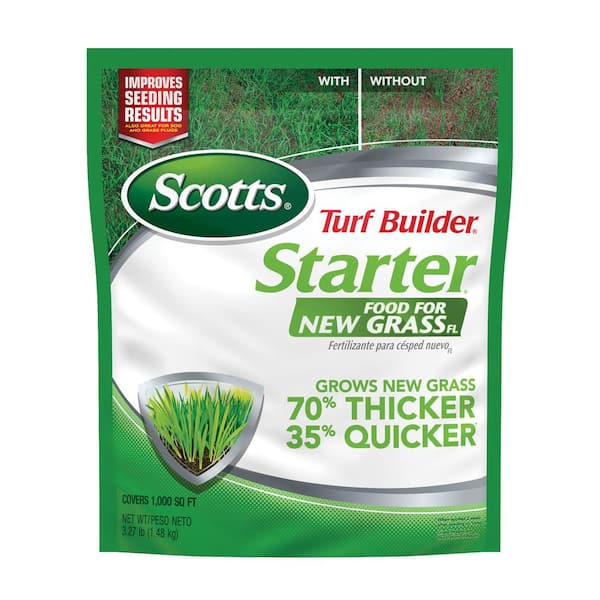If you want a lush, green lawn during Florida’s cooler months, planting rye grass seed at the right time is key. You might wonder, when exactly is the best time to plant rye grass seed in Florida to get the healthiest, most vibrant turf?
Planting too early or too late can lead to poor germination and patchy growth. But don’t worry—by understanding the ideal planting window and simple steps to prepare your lawn, you can enjoy a beautiful winter lawn that stands out. Keep reading to discover the perfect timing and expert tips to make your rye grass thrive in Florida’s unique climate.

Credit: www.lawnstarter.com
Ryegrass Growth Cycle In Florida
Plant ryegrass seed in Florida during early fall when daytime temperatures stay around 70°F. This timing helps seeds sprout well and creates a green winter lawn. Avoid warmer times, as hot soil can stop seedlings from growing properly.
Ryegrass thrives in Florida’s mild winters. It grows best when temperatures drop below 75°F. This cool-season grass appears green and lush from fall to early spring. As temperatures rise, ryegrass slows down and eventually dies back. Understanding this cycle helps in planning the best planting time. Proper timing ensures a healthy, green lawn during cooler months.
Seasonal Climate Impact
Florida’s climate has hot summers and mild winters. Ryegrass does well in fall and winter. It struggles during hot, humid summers. The grass grows quickly in cooler weather with ample moisture. Fall planting gives ryegrass time to establish roots before cold weather. Warm spring temperatures cause ryegrass to fade. This seasonal cycle affects lawn color and texture throughout the year.
Dormancy Of Summer Grasses
Summer grasses like Bermuda and St. Augustine enter dormancy in winter. They turn brown and stop growing as temperatures drop. Ryegrass fills this gap by staying green and active. When spring arrives, ryegrass fades as summer grasses wake up. This natural switch keeps lawns green year-round. Planting ryegrass during summer grass dormancy maximizes lawn beauty and health.
Ideal Planting Periods
Planting rye grass seed in Florida requires careful timing for best growth. The ideal planting periods vary by region and temperature. Proper timing ensures the seeds germinate well and the grass grows strong. Understanding the right months and temperature ranges helps achieve a lush green lawn during cooler months.
North Florida Timing
In North Florida, the best time to plant rye grass seed is between October and early November. The cooler temperatures help the seeds germinate quickly. Planting too early can expose seeds to heat stress, reducing success. This timing allows the grass to establish before colder winter weather arrives.
Central And South Florida Timing
Central and South Florida have warmer climates, so the planting window shifts slightly. Aim for late October through November. This period avoids the hottest months and gives rye grass a chance to grow before winter. Planting too late risks poor germination due to cold snaps.
Temperature Guidelines
Daytime temperatures should be in the low to mid-70s Fahrenheit for best seed germination. Soil temperatures near 60 degrees Fahrenheit support root development. Avoid planting during hot weather above 80 degrees as it stresses seedlings. Consistent cool weather improves seedling survival and lawn health.
Preparing Your Lawn
Preparing your lawn before planting rye grass seed in Florida is essential for strong growth. A well-prepared lawn helps seeds germinate evenly and roots establish quickly. Taking time to clear debris, test the soil, and loosen the ground sets the stage for a healthy rye grass lawn. Follow these steps carefully to prepare your lawn for the best results.
Clearing Debris And Thatch
Remove leaves, sticks, and old grass from your lawn. Debris blocks sunlight and water from reaching the soil. Use a rake or leaf blower to clear the area thoroughly. Thatch is a layer of dead grass between soil and live grass. If thatch is thick, use a dethatcher or rake to remove it. Clearing debris and thatch creates a clean surface for seed planting.
Soil Testing And Preparation
Test your soil to know its pH and nutrient levels. You can buy a simple soil test kit or send a sample to a local extension office. Rye grass grows best in soil with a pH between 6.0 and 7.0. Adjust soil pH if needed by adding lime to raise it or sulfur to lower it. Add fertilizer based on soil test results to provide essential nutrients. Healthy soil supports strong seed growth and root development.
Loosening Soil For Seed Contact
Loosen the top 1 to 2 inches of soil using a rake or garden tiller. Soft soil allows seeds to settle and absorb water easily. Break up large clumps and remove rocks or hard chunks. Good seed-to-soil contact improves germination rates. After loosening, level the soil surface to create an even bed. This step helps rye grass seeds sprout evenly across your lawn.
Seeding Techniques
Planting rye grass seed properly helps the grass grow strong and healthy. Using the right seeding techniques improves seed germination and lawn coverage. These steps make sure the seed gets the best start in Florida’s climate.
Spreading Seed Evenly
Spread rye grass seed evenly across the soil surface. Use a seed spreader for uniform coverage. Avoid piling seeds in one spot. This helps each seed get enough space to grow. Even spreading reduces bare patches and overcrowding.
Seed Depth And Coverage
Rye grass seed needs light to start growing. Cover seeds lightly with about 1/4 inch of soil or mulch. Too deep planting stops seeds from getting light and air. Light coverage protects seeds from birds and wind. Keep the soil loose but firm over the seeds.
Avoiding Common Seeding Mistakes
Do not plant rye grass seed in hot soil above 75°F. High temperatures lower seed survival. Avoid throwing seeds on hard or dry ground. Seeds need good contact with moist soil to sprout. Water gently after planting to keep soil moist. Do not overwater and cause puddles. Remove debris and loosen soil before seeding.
Watering And Maintenance
Proper watering and maintenance are vital for rye grass seed success in Florida. The region’s warm climate affects how you care for new grass. Knowing the right moisture levels and feeding methods helps the grass grow strong and healthy. This section covers key watering tips and maintenance steps to keep your rye grass thriving.
Moisture Needs For Germination
Rye grass seed needs consistent moisture to sprout. Keep the soil damp but not soggy. Water lightly several times a day during the first two weeks. This helps the seeds absorb water and start growing. Too little water stops germination, so check soil often. Once the grass sprouts, reduce watering to once daily.
Avoiding Overwatering
Overwatering can harm rye grass seedlings. Too much water causes seeds to rot or wash away. It also invites fungus and disease. Water only enough to keep soil moist. Let the top layer dry slightly between watering. Use a gentle spray, not a heavy flow. Proper drainage in your lawn prevents standing water.
Starter Fertilizer Use
Applying a starter fertilizer boosts early growth for rye grass. Choose one with balanced nitrogen, phosphorus, and potassium. Spread it evenly over the soil before or right after planting seeds. Fertilizer provides nutrients the young grass needs. Avoid over-fertilizing, which can burn seedlings. Follow package instructions for best results.

Credit: www.pennington.com
Overseeding Existing Lawns
Overseeding existing lawns with ryegrass is a common practice in Florida. It helps maintain green color during cooler months. This method improves lawn density and fills bare spots. Proper overseeding ensures a healthy, vibrant yard all winter long.
When To Overseed
The best time to overseed ryegrass in Florida is from October to early November. Daytime temperatures should be between 65°F and 75°F. Cooler weather helps seeds germinate well. Avoid planting during hot months, as seeds may fail to grow.
Choosing Ryegrass Varieties
Select ryegrass types that suit Florida’s climate. Perennial ryegrass is popular for its quick germination and dark green color. Annual ryegrass grows fast but lasts only one season. Choose varieties resistant to diseases for better results.
Managing Competition With Existing Grass
Before overseeding, mow the existing lawn short. Remove debris and thatch to improve seed contact with soil. Water lightly after seeding to keep soil moist. Avoid heavy fertilizer use until ryegrass is established. This reduces competition and helps new grass grow strong.
Dealing With Wildlife
Planting rye grass seed in Florida means facing challenges from local wildlife. Birds and small animals often eat the seeds before they can grow. This can reduce your chances of a full, healthy lawn. Taking steps to protect your seed helps improve germination and growth. Understanding wildlife habits can guide your prevention strategies.
Preventing Bird Seed Loss
Birds are attracted to the fresh, scattered rye grass seed. They quickly consume large amounts, leaving fewer seeds in the soil. To prevent this, scatter seed in smaller amounts over several days. This reduces seed loss and allows more to settle into the soil. Covering the seed lightly with soil or mulch also hides it from birds. Early morning or late evening planting can help, as birds are less active then.
Protective Measures
Use physical barriers like bird netting or garden fabric to protect seeded areas. Stakes or frames can hold netting above the ground, allowing seed to grow underneath. Repellents made for birds and small animals also help but choose safe options to avoid harm. Motion-activated sprinklers scare wildlife without damaging your lawn. Keep the area moist but avoid overwatering, which can attract animals looking for water. Regularly check and adjust your protective measures for best results.

Credit: www.homedepot.com
Late Fall And Winter Planting Tips
Planting rye grass seed in late fall and winter in Florida requires special care. Cooler temperatures slow seed germination and growth. Preparing your lawn and protecting seedlings increases success. Follow these tips to help your ryegrass thrive during the colder months.
Adjusting For Cooler Weather
Plant ryegrass when daytime temperatures stay between 50°F and 70°F. Avoid planting during warm spells to reduce seedling stress. Choose a sunny spot to maximize warmth and light. Prepare soil by removing debris and loosening the surface. This helps seeds make good contact with soil. Apply a thin layer of soil or mulch after sowing. This keeps seeds warm and moist for better germination.
Seedling Survival Strategies
Keep soil consistently moist but not waterlogged. Water lightly every day until seedlings appear. Protect young grass from strong winds and frost with temporary covers. Avoid heavy foot traffic on new seedlings. Use a balanced starter fertilizer to support root development. Mowing should start only after grass reaches 3 inches tall. This encourages thick, healthy growth and helps ryegrass survive Florida winters.
Frequently Asked Questions
When Should Ryegrass Be Planted In Florida?
Plant ryegrass in Florida from October to early November when daytime temperatures stay in the low to mid-70s Fahrenheit. This timing ensures better seedling survival and a green winter lawn. Avoid planting during warmer periods to increase germination success.
Can I Plant Ryegrass In The Fall?
Yes, plant ryegrass in early fall when temperatures are in the low- to mid-70s Fahrenheit. This timing ensures strong seedling growth and a green winter lawn. Prepare soil well, sow seeds evenly, and keep the soil moist for best results.
Can I Just Throw Rye Grass Seed Down?
You can throw rye grass seed down, but it often leads to poor germination. Prepare soil, spread seed evenly, then lightly cover with soil or mulch for best results. Keep the area moist to help seeds sprout and grow healthy grass.
Is October 1 Too Late To Plant Grass Seed?
October 1 is generally not too late to plant grass seed. Cool-season grasses like ryegrass thrive when sown in early fall. Ensure soil temperatures are consistently between 60-75°F for best germination. Prepare soil properly and keep it moist for healthy growth.
Conclusion
Plant rye grass seed in Florida during cool fall months. Aim for daytime temperatures in the low to mid-70s. This helps seeds germinate well and grow strong. Avoid planting when it’s too hot, or seeds may fail. Prepare soil by clearing debris and loosening the ground before sowing.
Spread seeds evenly and cover lightly with soil or mulch. Keep the area moist but not flooded for best results. Following these simple steps ensures a green, healthy lawn all winter long. Timing and care make all the difference.

